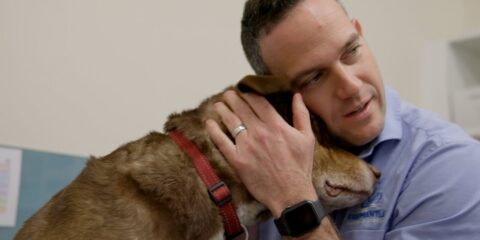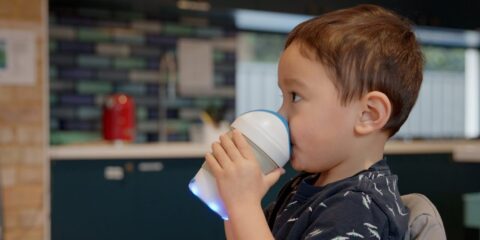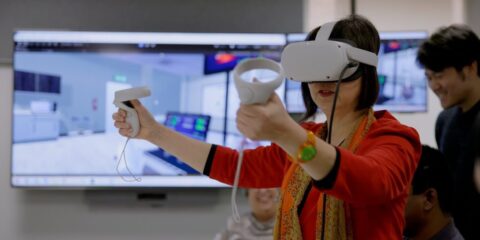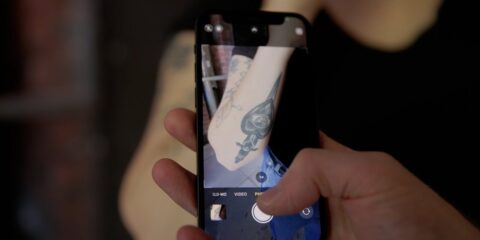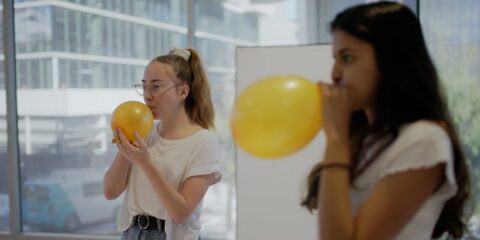2021 Curtinnovation Awards
Overall winner
A total prize pool in excess of $100,000 was awarded at the Curtinnovation Awards in October.
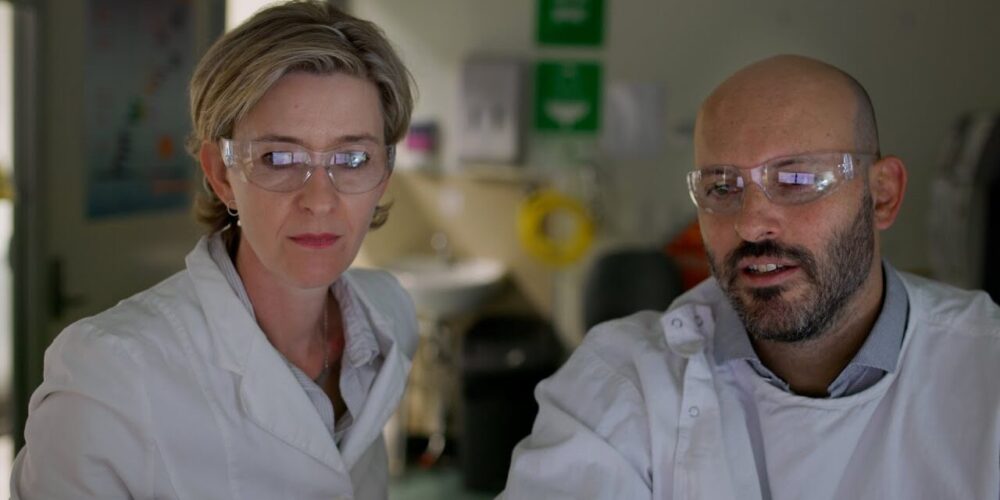
Test to detect early signs of liver cancer
Liver cancer causes 10% of all cancer-related deaths in Australia. Unlike other types of cancer, there are no laboratory tests or biomarkers to detect a person’s risk of developing liver cancer. Consequently, the disease often goes undetected until it is far advanced.
Now a Curtin team has developed a predictive prognostic test to estimate future liver cancer risk in people with existing liver conditions. The test was developed using a cutting-edge technology called Single Cell Transcriptomics, which identifies the molecular fingerprint of thousands of genes, one cell at a time. Combined with new computational methods for data analysis, the technology reveals benign biological processes in liver disease that precede the formation of liver cancer.
Once commercially developed, the test will enable clinicians to categorise patients according to their liver cancer risk factor and offer early treatment options where appropriate.
Team: Dr Rodrigo Carlessi, Associate Professor Nina Tirnitz-Parker (Curtin Medical School), Professor John Olynyk (Fiona Stanley Hospital).
Science and Engineering
VetChip: smart microchips that can monitor animal health
The VetChip is the world’s first smart microchip designed to monitor the health of animals. Placed under the skin, the VetChip features an array of tiny sensors that report on an animal’s heart rate, temperature, respiratory rate, stress levels, location and activity. This data is then relayed to owners or vets via a smartphone app.
Crucially, the app will help owners detect abnormal health parameters and generate alerts, resulting in better health outcomes for animals. The product will be launched at selected vet practices in Western Australia, Victoria and New South Wales in early 2022, before being released nationally.
Team: Dr Garnett Hall, Mr Zyrus Khambatta, Mr Ross Khambatta, Mr Dilesh Wadia, Dr Maxwell Hall, Mr Pendar Dalili (VetChip).
Health Sciences
EarBuddy: treating children with chronic ear infections
Chronic ear infections are common in children, and may cause hearing difficulties, discomfort and a delay in language and speech development. Current treatment usually involves implanting pressure equalisation tubes under general anaesthesia to ventilate the middle ear through the eardrum, however, this is costly and can involve complications.
EarBuddy is an inexpensive, non-invasive device that drains the middle ear fluid in children with chronic ear infections, avoiding the need for surgery. Resembling a sippy cup, the EarBuddy contains a nasal interface that senses when a child swallows and delivers a gentle puff of air into the nasal cavity, which releases the trapped fluid. Children can use the device independently or with assistance.
Team: Dr Matt Oldakowski, Mrs Intan Oldakowska (School of Civil and Mechanical Engineering), Associate Professor Peter Santa Maria (Stanford University), Dr Paul Bumbak (Child and Adolescent Health Service).
Humanities
VITooLs: Learning difficult concepts in pharmacology
VITooLs is a virtual reality training platform that simulates real-world scenarios, to help learners grasp complex concepts and practices. It provides teachers with the ability to scaffold learning material, whereby learning materials from different areas and levels of a course can be incorporated into one simulation.
The platform is designed primarily for teaching and training in pharmacology, which is an integral discipline of pharmacy, medicine, nursing, paramedicine and other biomedical sciences. Currently in prototype form, one training module simulates the learner administering adrenaline to a patient, which can’t be done in a laboratory setting or on human test subjects. Another prototype demonstrates the effect of drugs on a patient at the cellular level.
The intended users of the platform are university students; however, it can also be used to retrain and upskill practitioners.
Team: Dr Rima Caccetta, Associate Professor Lisa Tee (Curtin Medical School), Associate Professor Francesco Mancini, Mr Jonathan Pillai, Mr Justin Owen (School of Design and the Built Environment), Associate Professor Aneesh Krishna (School of Electrical Engineering, Computing and Mathematical Sciences), Mr Matt Reed (Faculty of Humanities).
Business & Law
Mobile app using marks, scars and tattoos to identify suspects
When an individual first enters custody, their details are recorded and archived. Body markings such as scars, tattoos and piercings are noted to help identify them if they are involved in future crimes. In some agencies, these markings are recorded on paper in the form of hand-drawn sketches.
To improve efficiency in intelligence gathering, a Curtin team has proposed a new mobile app that can help law enforcement officers identify offenders quickly just from their marks, scars and tattoos. The app captures and annotates images of suspects and records the location, scale, colour and description of their unique markings. The app also includes a search engine to identify possible offenders that match a text description or a physical image.
The app has been endorsed by the WA Police senior leadership team, who plan to deploy it across the entire WA Police force.
Team: Associate Professor Vidyasagar Potdar, Associate Professor Amy Tian (School of Management and Marketing), Mr Jason Luppnow, Ms Ash Roberts (School of Electrical Engineering, Computing and Mathematical Sciences).
Teaching & Learning
My Vital Cycles: increasing education about menstrual health
My Vital Cycles is a health literacy program for secondary schools designed to improve knowledge of the physiological and psychological issues related to ovulation and menstruation.
Adolescent girls often experience period pain, mood swings, abnormal bleeding, anaemia and irregular cycles. These issues can result in school absenteeism, lower academic performance and body image concerns. However, teachers have cited lack of training and inaccurate resources as reasons to outsource this area of health education.
To address this, My Vital Cycles has been developed with input from experts in fertility, medicine, education and public health. The program provides professional development for school staff along with accurate resources for students, to build capacity and to deliver lessons that last a lifetime.
Team: Mrs Felicity Roux (Curtin Medical School), Mrs Kammi Rapsey, Ms Alexei Tsallis (Media on Mars), Professor Sharyn Burns, Dr Jacqui Hendriks, Dr Jun Chih (School of Population Health).
International
AgriSmartEye: a reliable, low-cost method to analyse black pepper
Black pepper is a valuable agricultural commodity in Sarawak, contributing to more than 95% of Malaysia’s pepper industry. As a premium product, it is important to ensure that it is sold as pure and unadulterated without added bulk contaminants. However, existing methods to maintain and improve the quality of the pepper are time-consuming and uneconomical.
Now, a research team from Curtin University Malaysia has proposed a rapid, reliable and cost-effective screening tool. The tool uses hyperspectral imaging technologies combined with deep learning artificial neural networks, which not only detect pollutants in the black pepper powder, but also indicate its chemical composition and geographical origin. The tool can be used by local producers, traders and regulatory bodies such as the Malaysia Pepper Board.
Team: Associate Professor Agus Saptoro, Mr Terence Chia Yi Kai (Curtin University Malaysia).
